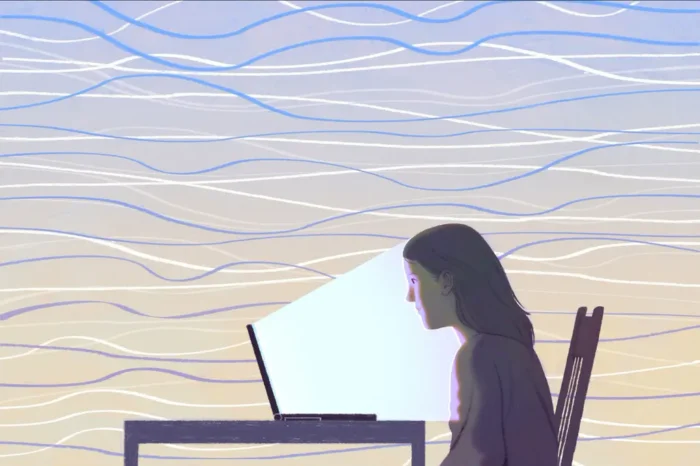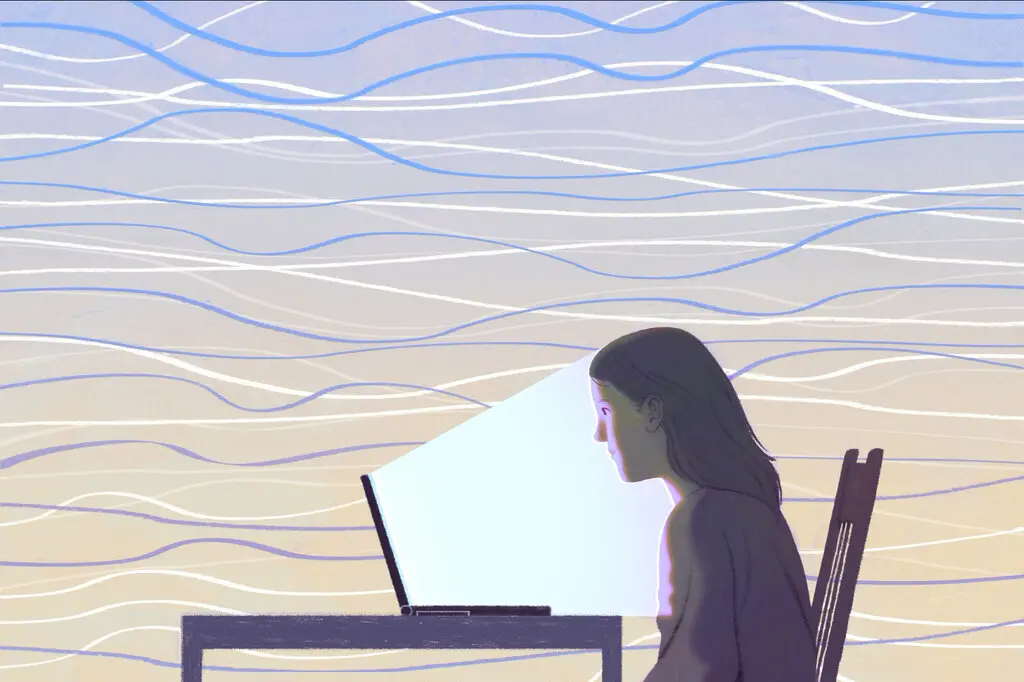Is your screen making you forget to breathe? Let’s talk about what is screen apnea and learn 4 tips to keep your breath steady while scrolling.
Most Americans spend 10 hours daily sitting, increasing cardiovascular risks. Despite the proven benefits of movement, 40% prefer remaining sedentary.
In 2007, while most of us were adjusting to our rapidly digitizing lives, Linda Stone, an ex-Microsoft executive, stumbled upon a strange observation.
Despite religiously practicing breathing exercises, the moment she delved into her emails, her breathing pattern changed. She found herself breathing much more shallowly. Curiosity piqued, Stone initiated an experiment, albeit in a rather informal setting: her dining room.

Over time, she invited about 200 acquaintances — friends, family, and neighbors — to participate. As they checked their emails, she keenly observed their heart rates and breathing patterns.
Astonishingly, around 80% of them either held their breath or changed their breathing rhythm. Stone aptly termed this discovery “email apnea,” which she later introduced to the public through a 2008 Huffington Post article.
Read more here: Unplug To Recharge: 10 Incredible Benefits Of Digital Detox
And What is Screen Apnea? How Does it Affect You?
Ms. Stone later broadened the term to “screen apnea,” highlighting the altered breathing patterns many of us exhibit while engaging in various activities on our screens.
Screen time has become an inextricable part of our lives, and James Nestor delves deeper into the phenomenon in his 2020 book, “Breath: The New Science of a Lost Art.”
Imagine juggling ten screens, with texts, calls, and emails all clamoring for your attention. Nestor points out that our minds and bodies haven’t evolved to handle such ceaseless stimuli.
At the heart of screen apnea is our body’s intrinsic response to stress. Dr. Stephen Porges, an expert in the autonomic nervous system at the University of North Carolina at Chapel Hill, explains that when bombarded with stimuli, our brain scrambles to determine if it’s a threat.
This heightened focus drains mental energy, leading to physiological changes like decreased breathing and reduced heart rate. It’s akin to a predator, say a cat, stalking its prey. Just before the pounce, the cat freezes and its breathing becomes faint.
Similarly, an unexpected email or message might make us “freeze,” holding our breath subconsciously.
Such reflexes, while natural, can be problematic if activated continuously. As Porges suggests, prolonged periods of this shallow breathing can render us fatigued after a day’s work, even if the tasks weren’t overtly taxing.
Here are some screen apnea symptoms:
- Shallow breathing
- Holding breath intermittently
- Reduced awareness of breath
- Mental fatigue
- Increased stress response
- Disrupted heart rate patterns
Read more here: 5 Digital Wellness Tips For Disconnecting Over The Holidays
Fortunately, there’s hope in combating this silent digital epidemic:
- Set Breath Reminders: As Nestor suggests, occasional gentle alerts can prompt you to gauge your breathing. This little nudge can bring awareness, allowing you to recalibrate.
- Sigh it Out: An occasional audible sigh, as Dr. Spiegel recommends, can effectively reset erratic breathing patterns. Some research even suggests that a prolonged exhale compared to an inhale can uplift one’s mood.
- Opt for Bigger Screens: Dr. Porges speculates that working on larger screens might be less straining, as it demands less from our nervous system than squinting at smaller ones.
- Meaningful Breaks: Instead of shifting from a computer to a phone, take genuine breaks. Dr. Porges suggests easy, relaxing activities like listening to music. Dr. Spiegel champions the idea of integrating physical activities, such as nature walks, to rejuvenate the body.
In essence, while screens are a mainstay in our lives, a few conscious efforts can help us ensure they don’t dictate our health and well-being.
Share your thoughts about this in the comments below!








Leave a Reply
You must be logged in to post a comment.